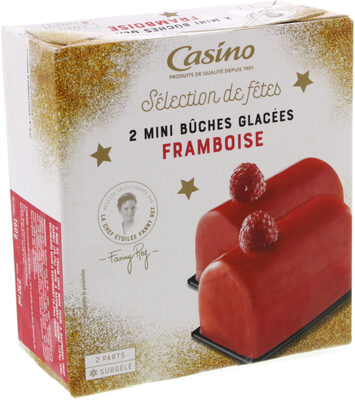2 Mini bûches glacées Framboise - Casino - 160 g
This product page is not complete. You can help to complete it by editing it and adding more data from the photos we have, or by taking more photos using the app for Android or iPhone/iPad. Thank you!
×
Some of the data for this product has been provided directly by the manufacturer casino.
Barcode: 3222477074682 (EAN / EAN-13)
Common name: 2 mini bûches glacées composées d'un sorbet plein fruit à la framboise (79,7%) décorées d'un enrobage à la framboise (16%) et d'une framboise en décor (4,3%), surgelées
Quantity: 160 g
Brands: Casino
Categories: Desserts, Festive foods, Frozen foods, Christmas foods and drinks, Frozen desserts, Yule log, Ice cream log
Stores: Casino
Countries where sold: France
Matching with your preferences
Environment
Carbon footprint
Packaging
Transportation
Other information
Preparation: Sortez les mini bûches de leur emballage, déposez-les sur un plat de présentation 5 minutes environ avant de les déguster.
Conservation conditions: Plusieurs mois dans le compartiment à -18°C d'un congélateur dans la limite de la date de durabilité minimale. Attention : Ne jamais recongeler un produit décongelé !
Recycling instructions - To recycle: Etui carton
Recycling instructions - To discard: Plaque carton et boîte plastique
Report a problem
Data sources
Product added on by kiliweb
Last edit of product page on by roboto-app.
Product page also edited by casino-off, openfoodfacts-contributors, teolemon, yuka.VFowT05hRTlsLzFXdWRzWitTdmYrL2dwOTd1RFhEK3VEYkFWSWc9PQ.








